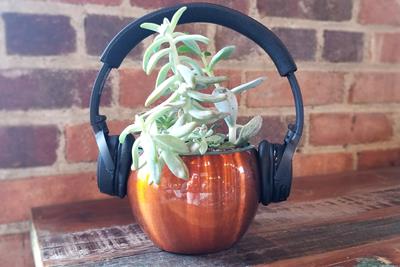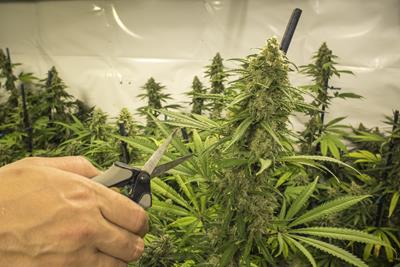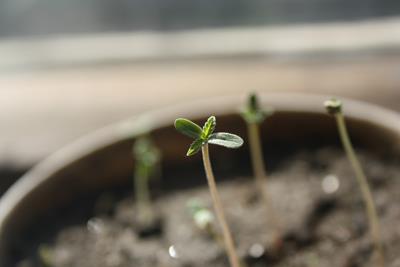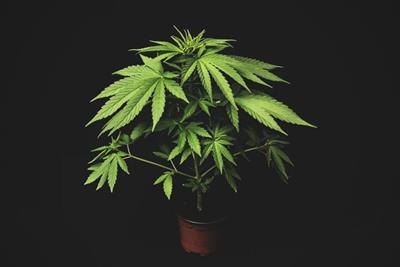
Sunday May 15, 2022
By Trevor Ross
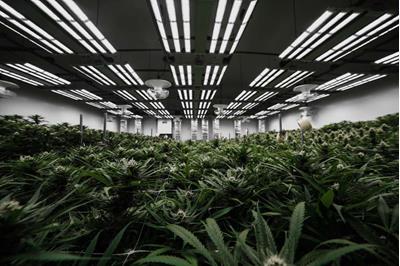 Growing
Growing
A decade ago, LED grow lights were a hard sell. Compared to traditional grow lights, they offered savings on a cultivators electrical bill in exchange for an underwhelming harvest yield compared to traditional grow lights.
However, that’s all changed. Aside from energy savings, modern LED grow lights now offer superior light output, a far wider light spectrum, and many other advantages over traditional grow lights that boost both yield and quality.
That’s why PotGuide is here to enlighten you on the evolution of LED Grow lights, how and why they improve the growing process, and which grow lights are best for the commercial and home grower.
HPS vs CMH vs LED Grow Lights
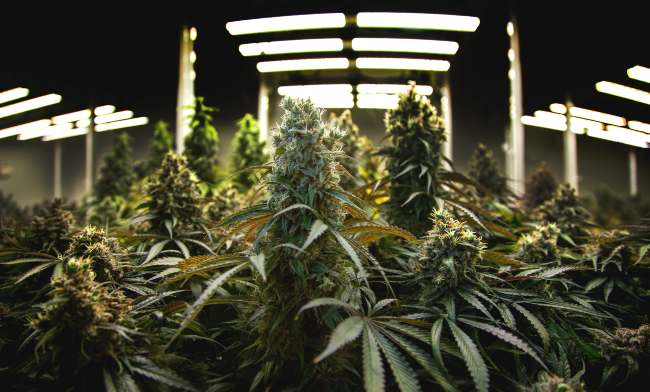
Up until the mid-2000s, there were two main choices of indoor grow lights: High Pressure Sodium (HPS) developed in the 1960s and Ceramic Metal Halide (CMH) fixtures developed in the 1990s.
HPS offers a powerful bulb which helps to maximize THC output in a grow room. A single 1000w HPS bulb produces three times the lumen output of a CMH bulb. They also offer a wide variety of reflectors to fit any grow room need, are available as both single and double-ended bulbs to further boost light potential, and are the cheapest option. On the downside, they require a lot of energy, put out a lot of direct heat, and need to be replaced frequently.
CMH bulbs offer a wider, more even color and light spectrum, which helps to maximize terpene profile. CMH produce a wider spectrum of blue, red, and white light throughout the plant’s life cycle. They also run cooler since they produce less lumens, which lowers HVAC costs but means less THC production.

Around 2010, LED grow lights were introduced. LEDs (Light Emitting Diodes) are 90% more efficient at producing light, run far cooler due to a heat sink, and can be customized to produce a variety of color spectrums for any use. However, early LED grow lights had a higher upfront cost (they still do), couldn't match the lumen output (and thus the yields) of HPS and CMH lights, and were stuck in the purplish color spectrum. They made up for it in energy savings, but that was about it.
Recently, thanks to developments in LED grow light technology by companies like Fohse, LED grow lights are primed to dominate indoor cannabis growing.
Fohse and LED Grow Lights

To gain more insight into the latest developments in LED grow light technology, PotGuide reached out to Tom Stanchfield, the Senior Vice President of Sales at Fohse. Fohse was recently ranked number one on Inc. Magazine’s fastest growing private companies in the Rocky Mountain Region. They hold 19 patents for their LED grow light designs and sell to clients in 32 countries. (We should mention that Foshe in no way paid for inclusion in this piece, we just wanted to talk to someone who knows a lot about LED lights and they are the leading example).
LED Grow Light Output Can Be Fine Tuned
The first benefit to the modern LED grow lights that Tom pointed out was the ability to fine-tune the light spectrums. LEDs give the plant exactly the wavelengths it needs, exactly when it’s needed in each stage of the development to boost resin output. For example, Fohse’s LED grow lights include a spring, summer, and autumn setting.
Their spring mode “has a lot more whites and blues within that spectrum. It gets the plant to really start stretching and creating really good inner nodal spacing.” After a week or two, growers can then switch to summer mode “where you start to introduce more of a full spectrum, more of the reds and far reds…” finishing the plant in autumn mode for the last month, which is “…very similar looking to an HPS Spectrum [with] a lot more of the far reds.”
LED grow lights have also advanced in light output. Fohse’s A3i LED grow light can put out 1500 watts, without the heat and top bleaching that can come with 1000 watt HPS grow lights. They can also be dimmed down to 32% intensity or brought up to 100% depending on the day's need.
This stronger light output and wavelength control improves bud density as well as boosting the THC and terpene production in the trichomes. In Fohse’s own internal R&D tests, over 40 harvests, “on average we out-yielded by about 30%, increased the terpene profile significantly and on average a THC count went up by about 4%.” A Michigan client reported a revenue increase of “an extra four and a half million dollars compared to what they were doing with their HPS setup.”
LED Grow Lights: Environmental Impact
LED grow lights have now become the more environmentally friendly option compared to other grow lights, while also producing a better quality and quantity of cannabis yields. Besides being more energy efficient, “...you're removing a substantial amount of heat from the room. So it's a lot easier to manage your HVAC and dehumidification loads.” LED grow lights save such a substantial amount in energy costs that California is requiring all new grows to use LED grow lights starting in 2023.

Another environmental benefit to LED grow lights is their longevity. While HPS and CMH light need to be replaced frequently due to burn out, LED grow lights like Fohse’s “are specced to last 110,000 hours…[or] 12 to 15 years.”
Home Vs Commercial LED Grow Lights
LED grow lights are available for both commercial and home growers, although obviously you’d need a different model depending on your grow. For example, a high base, single-tier rolling table type style grow would need a high wattage fixture, like Fohse’s 1500 watt A3i, while a home grower in a tent would only need a 640 watt Aries model.. If you’re looking for LED lights for your home grow, be sure to account for the proper wattage. Because LED grow lights are so programmable, they simplify the process no matter how large your harvest
The Wrap Up
LED grow lights have come a long way in the past decade, from an underdeveloped, energy-saving option to a finely tuned, high wattage device that outperforms the competition in yield and looks to become the industry standard. While LED grow lights still have a high upfront cost, they’ll continue to pay for themselves in energy savings, longevity, and yields.
Frequently Asked Questions
What is the Highest Yielding LED Grow Light?
Fohse’s A3i is the highest yielding commercial model, although some list the MARS Hydro as the highest yielding one on the market.
Are LED Lights the Best for Growing?
Yes. They offer more light output and color spectrum than standard grow lights, and can be programmed to provide exactly the type of light your plant needs at all points of development.
Can Any LED Light be Used as a Grow Light?
No. LED grow lights are specifically designed with a light spectrum suited for plants. The LED lights used to light up your house don’t have the same spectrum.
What is the Most Powerful Grow Light?
LEDs are generally the most powerful grow light, since their temperature control allows for them to have a stronger lumen output without the risk of overheating your plants.
Have you switched to LED grow lights? Have you noticed any improvements in your flower? Let us know in the comments!
Photo Credit: Fohse



